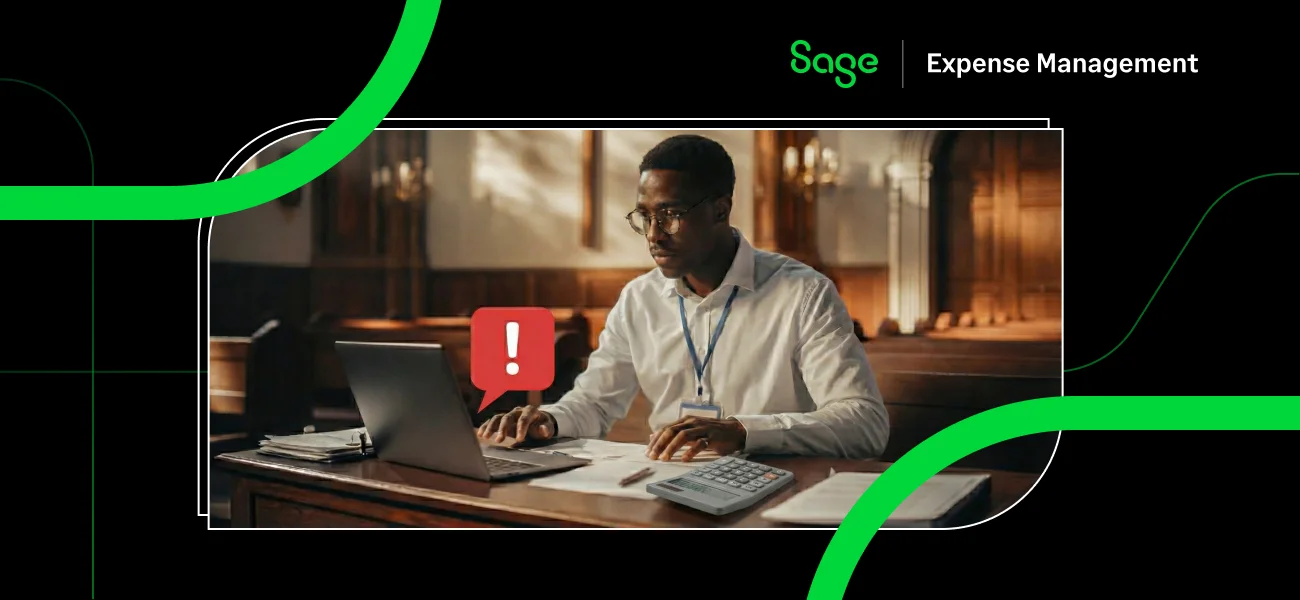Properly maintaining your books is a critical part of running a business. Access to the financial status of your company can help you make better decisions and keep an eye on whether you're progressing toward your goals.
However, despite knowing its importance, a recent study shows that 60% of SMB owners feel ill-equipped regarding their business finances and accounting. This is a problem that needs solving.
To help SMBs embark on this journey, we've compiled a comprehensive guide on maintaining your books. This article covers the basic daily, weekly, and monthly accounting tasks to help keep SMBs on top of their finances.
Let's get started, shall we?
Daily Accounting Checklist
As ridiculous as it sounds, some large firms close their books daily. For instance, the Controller Division at Goldman Sachs produces daily profit and loss statements for a specific product or area within the firm. But that's overkill for the average SMB.
To maintain accurate and up-to-date financial records, establish a daily routine that includes these essential accounting tasks:
1. Record And Reconcile Transactions In The General Ledger
Your primary accounting tasks should focus on recording transactions. Understanding daily transactions are crucial to help you track how much cash your company has and how much it owes to others. The process of recording transactions includes logging and verifying the money going in and out of the door, as seen in the general ledger.
2. Pay And Record Expenses
We know that tracking all your receipts, invoices, and other essential documents can be challenging. However, tax purposes and internal records must have an audit trail to use if you find errors when balancing the books at the end of the month.
For bills, the answer always stays the same. Pay them promptly to avoid penalties, upset vendors, and unwanted debt.
To make your life easier, consider using an expense management software. You can track everyday business expenses from communication tools, contractors, and rent in one seamless dashboard. Businesses can also manage their travel and entertainment expenses without the constant headache of submitting manual expense reports.
You can even automate credit card reconciliation to get real-time visibility into every transaction and easily track all the credit card rewards programs associated with daily business spending.
3. Provide A Summary Of The Cash Balance
Cash is king. Without it, your business will struggle to survive. Thus, sending a daily cash balance report to senior stakeholders helps ensure that your business has enough money in the bank to keep the lights on, purchase more inventory, and pay your employees.
4. Review and Respond to Financial Alerts
Regularly reviewing and responding to financial alerts is crucial for staying on top of your business’s financial health. Automated accounting software can be set up to notify you of low balances, pending payment, or unusual transactions.
Ignoring these alerts can lead to missed opportunities or, worse, financial mishaps. Make it a habit to check these alerts daily and take the necessary actions to resolve any issues promptly. This proactive approach will help prevent small problems from becoming larger, more costly ones.

Source: SAP Insider
Weekly Accounting Checklist
These weekly tasks aim to monitor cash flow for all business operations to keep your business running smoothly.
1. Deposit Cash And Checks
Odds are most of your accounts receivable are electronic payments, so you don't need to make daily trips to the bank.
Weekly trips are a decent frequency to help you keep your cash flow healthy and records updated with any paper checks and cash payments. Also, remember to verify if the checks cleared before you spend more money or pay out more bills.
2. Send Out Client Invoices
As per a recent study, 85% of C-suite executives say poor communication with their customers has led to nonpayment.
Billing your clients on a consistent schedule can reduce late payments. With weekly invoices, the product or service you provide to customers is still fresh in their minds, so there'll likely be fewer questions or qualms about the bill. If you wait too long to bill your client, you're more likely to result in a delinquent payment.
3. Pay Your Employees
The frequency of employee reimbursements would depend on the frequency of transactions your employees make on your behalf. When managed traditionally, it leads to a lot of back and forths and errors, risking your company's financial bottom line.
But, if SMBs use an expense reimbursement software, the process becomes fairly simplified, ensuring your team gets paid on time and stays motivated.
Paying employees every week (or every other week) also helps prioritize payroll tax withholding and check employee timesheets. If your employees clock more than 40 hours a week, you might be liable to pay them overtime. It doesn't hurt to keep a close watch on their timesheets to avoid surprises and allocate budgets accordingly.
4. Make Sure Proper Controls Are In Place
The primary role of a controller, accountant, or bookkeeper is to safeguard company assets. And to do so, you need the proper controls in place. These controls can range from access management to internal audits and enhanced cybersecurity protocols.
A single fat-fingered number can lead to incorrect financial statements. Let alone if a cybercriminal gets their hands on proprietary company data. Or if an employee submits fraudulent expenses that generate a material loss for your business.
Here are some ways to prevent these unfortunate yet common issues:
- Review your internal controls weekly to ensure nothing is slipping through the cracks.
- Automatically check for false or overstated expenses, duplicates, or unusual employee spending activity by investing in an expense management software.

5. Review and Reconcile Bank Accounts
Reconciliation is one of the most critical aspects of your weekly accounting routine. Ensuring that your bank statements align with your internal records helps identify discrepancies early, whether they are due to errors, unauthorized transactions, or timing differences.

6. Analyze and Adjust Cash Flow Projections
Cash flow is the lifeblood of any business. Regularly analyzing and adjusting your cash flow projections allows you to anticipate shortfalls and plan accordingly. Use your weekly financial data to update projections, considering upcoming expenses and expected revenues.
Software tools can simplify this process by providing real-time insights into your cash flow trends, helping you make informed decisions about spending, saving, and investing. Adjusting your projections weekly ensures that you’re always prepared for the financial demands of your business.
Monthly Accounting Checklist

With another month of business under your belt, it's time to close the monthly books. Use this monthly accounting checklist to help keep you on track:
1. Make Sure Everything Balances
It's critical to check your accounts at the end of every month. The end of the month is the busiest time for accountants. Why? They keep track of accounts payable and receivable to ensure accurate financial statements.
The key is to ensure that everything balances out. So if your checkbook, bank accounts, and general ledger don't align, there's an error somewhere that needs addressing. On the other hand, if everything lines up perfectly, you can breathe a sigh of relief (until the next month rolls around).
2. Audit Your Inventory Data
Set aside time to reorder your best-selling products and identify slow-moving items that may need a price reduction. Accurate inventory numbers are also crucial when determining the cost of goods sold (COGS), an important figure in the income statement.
By keeping track of what moves quickly and what doesn't, it's easier to make adjustments so that you don't sell out of popular items or hold onto too much inventory. Project planners like a Gantt chart can be a great way to keep track of inventory and help allocate resources.
3. Review Accounts Receivable
The end of the month is the perfect time to review all invoices and understand the balance of aged receivables. Make sure to send email reminders to customers who are yet to pay by the invoice due date, or you can also call customers directly for an update.
Aged receivables will help you project future cash flow and if you need to hold a specific cash reserve for delinquent payments.
4. Generate End-Of-Month Reports
This is when you generate your profit and loss statement (i.e., income statement), balance sheet, and cash flow statement. Remember to review the actual figures vs. estimates from the prior month. Where'd you exceed expectations, and where'd you fall short?
5. Review Month-Over-Month Fluctuations
Comparing your current month's balance sheet — July 31, 2024, for example — to a balance sheet from the prior month (June 30, 2024) can tell you how well you manage assets and liabilities.
The idea is to look for any material variances between the two months. For instance, if your accounts payable balance increases because you increase the marketing spending or hire more headcount,
6. Prepare for Tax Filing
Preparing for tax filing is a critical task that should be handled meticulously every month. This involves gathering all necessary documentation, including sales records, payroll data, and expense receipts.
An expense management software can be invaluable here, as it keeps all your financial data organized and easily accessible. It can also categorize expenses according to tax codes, making it easier to claim deductions and reduce your tax liability.
Regularly updating your tax file ensures you're ready when tax season rolls around and helps you avoid last-minute scrambles.
Also Read:
7. Plan for the Upcoming Month
With the previous month’s data in hand, planning for the upcoming month becomes a strategic exercise. Review your financial goals, budget for anticipated expenses, and set aside funds for unexpected costs. To make informed decisions, incorporate insights from your cash flow analysis, accounts receivable, and month-over-month fluctuations.
Also Read:
Wrapping Up
Many bookkeeping processes we discussed today are manual and extremely error-prone (even with robust internal controls).
Introducing the right accounting automation tools into your monthly accounting checklist is a game changer. It can help improve the accuracy of your books and records, save your team time, and prevent financial loss.




.webp)
















